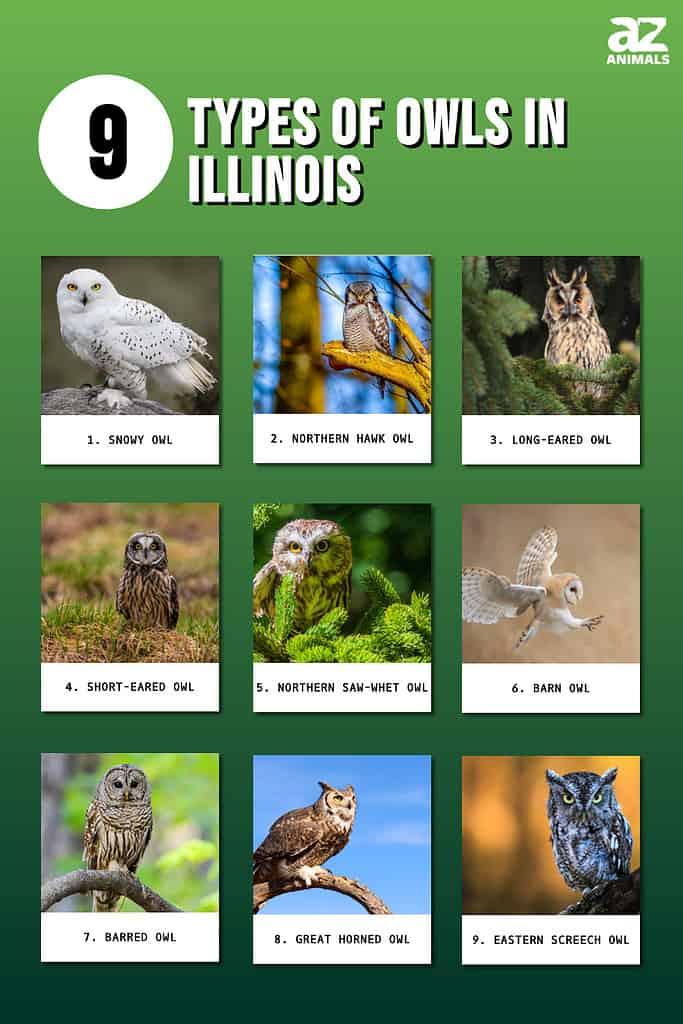
Owls are some of the most fascinating birds of prey and are famous for their distinctive calls and unique facial appearance. There are approximately 230 species of owls, and they live in a wide range of habitats across the world. Nine species can be found in Illinois, but although some of them are permanent residents in the state, others are incredibly rare. So, let’s discover the owls in Illinois, including where they live and when they are most active!
1. Snowy Owl
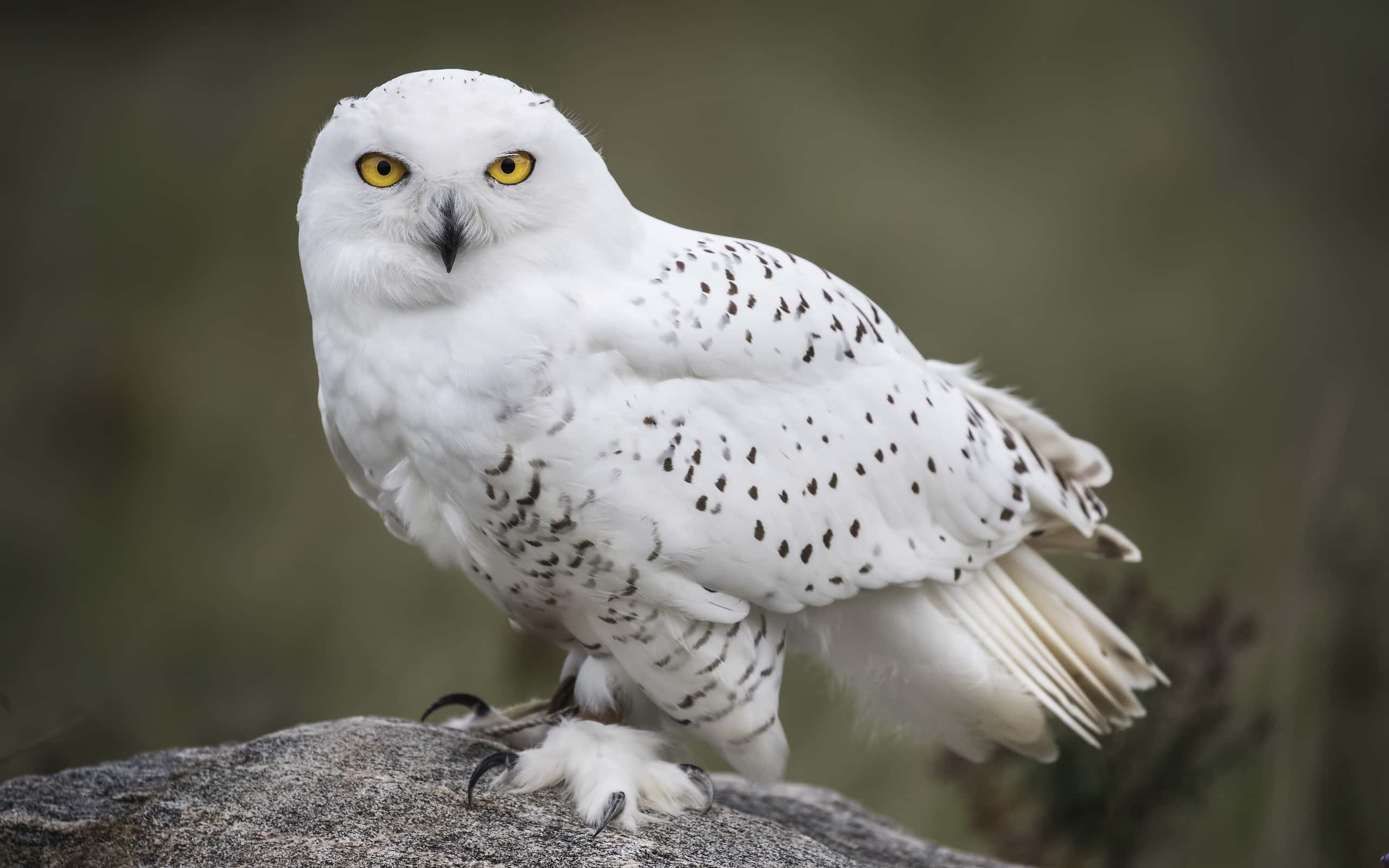
Snowy owls have a distinctive white appearance.
©Carol Gray/iStock via Getty Images
The first owl on the list is the stunning snowy owl which is easily distinguished by its white appearance. Snowy owls sometimes have black or brown markings on their bodies and wings and have a wingspan of around 51 inches. Their regular range is in the Arctic and they migrate south during the winter. However, they are particularly rare owls in the state as Illinois is considered to be right on the bottom edge of their winter range. When they do visit the state during the winter it is usually only in the northeastern region that they can be spotted. When in the state they typically prefer open areas such as fields or prairies.
2. Northern Hawk Owl
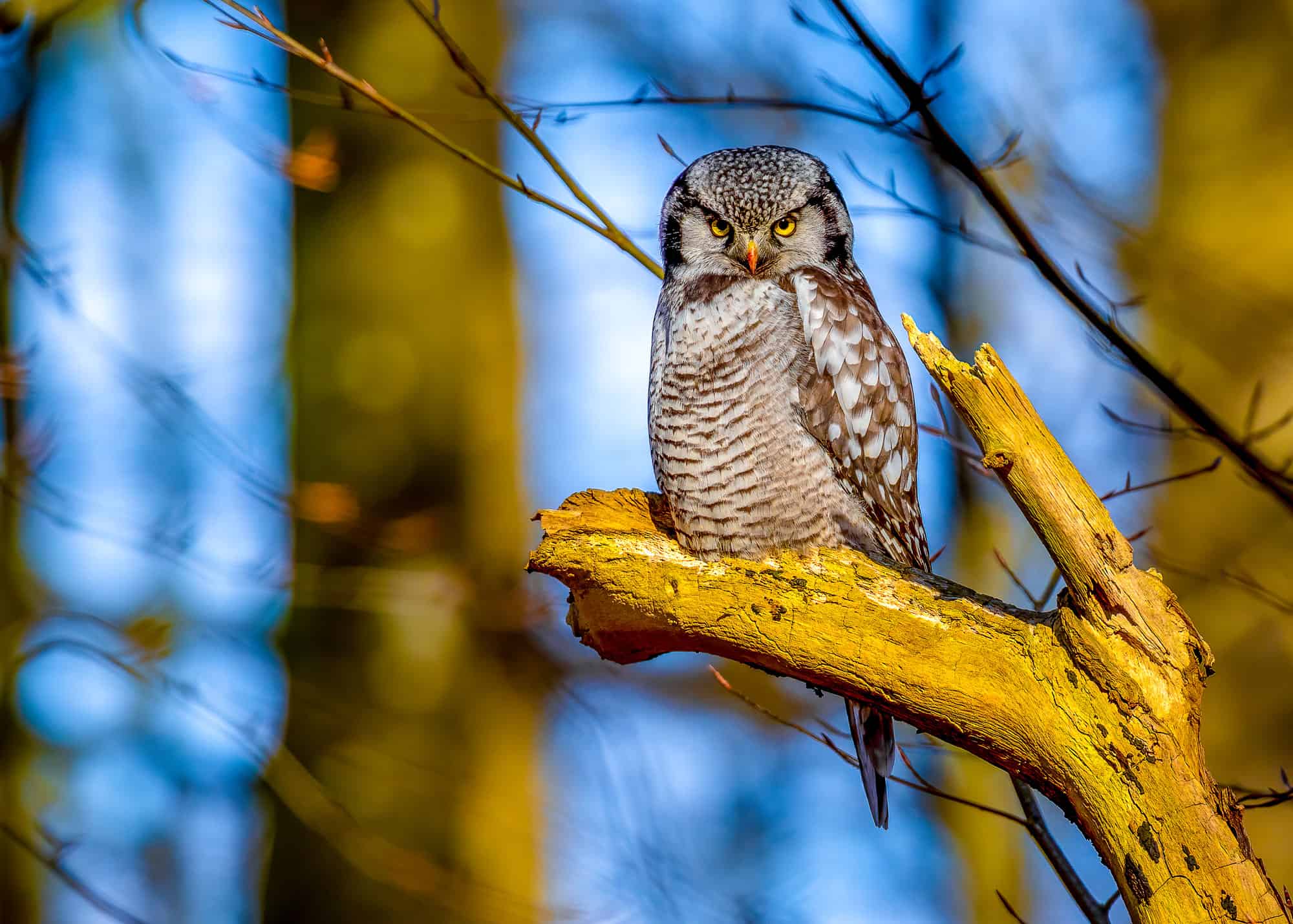
Northern hawk owls typically only occur in the northern area of Illinois.
©Svitlana Tkach/Shutterstock.com
Next is the northern hawk owl which only inhabits the most northern regions of the state during the winter, and even then it is not particularly common. Northern hawk owls are 14 to 16 inches long with a wingspan of around 18 inches. They are dark brown with white spots and markings and a black border around their face. As their name suggests, they are often regarded as having a similar appearance to a hawk. Northern hawk owls are diurnal and typically live in boreal forests.
3. Long-Eared Owl
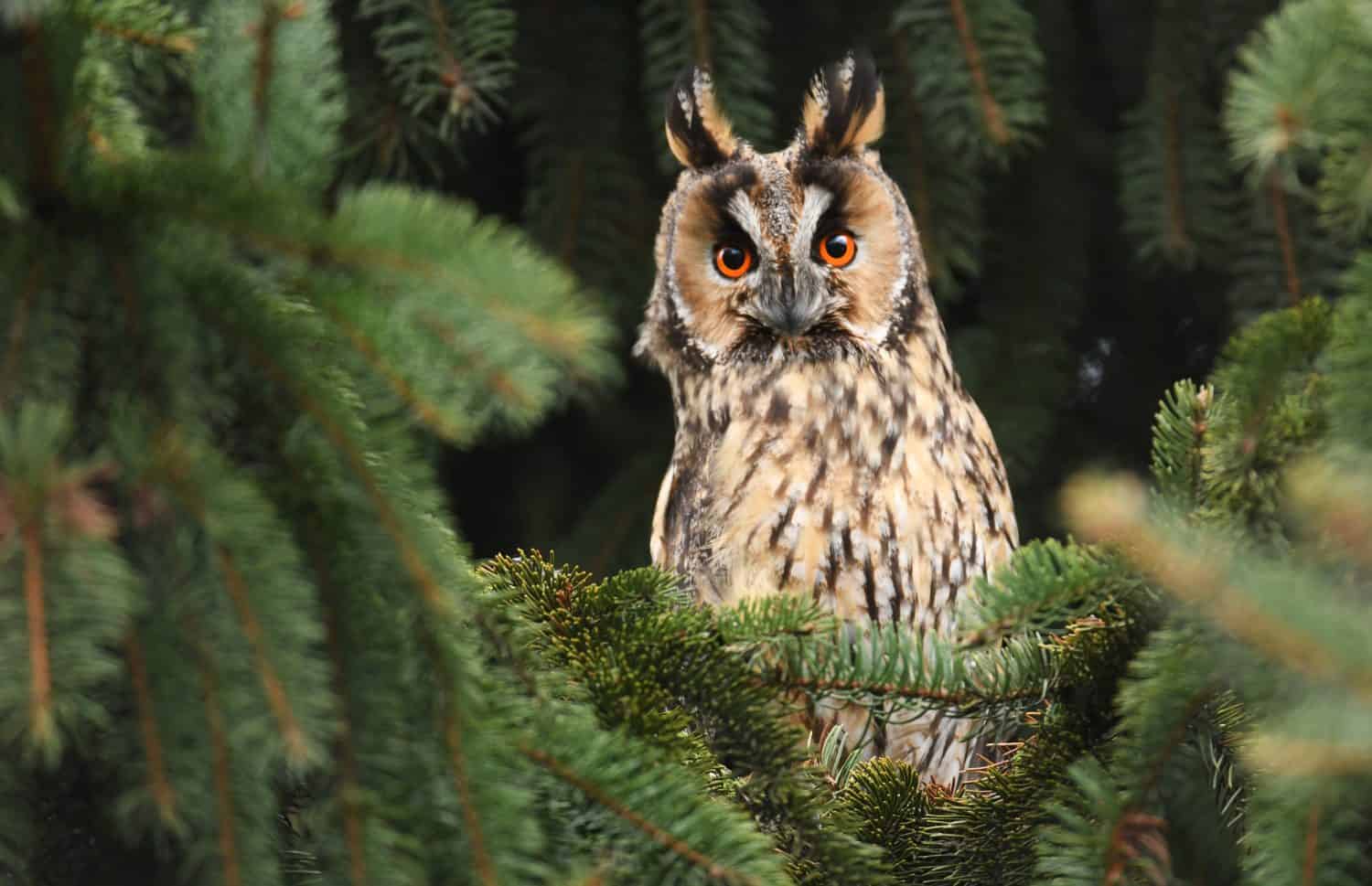
Long-eared owls can be distinguished by their large ear tufts.
©Piotr Krzeslak/Shutterstock.com
Another owl that only visits the state during the winter is the long-eared owl which is named for its distinctive ear tufts. Long-eared owls are approximately 12 to 16 inches long but have a fairly large wingspan of 36 to 42 inches. They are typically light brown but have dark brown markings on their body and wings. Long-eared owls live and nest further north but migrate down into the upper two-thirds of the state during the winter. Despite being rare in the state, they are present from October to April and inhabit woodlands and forests, although they also hunt in open fields.
4. Short-Eared Owl
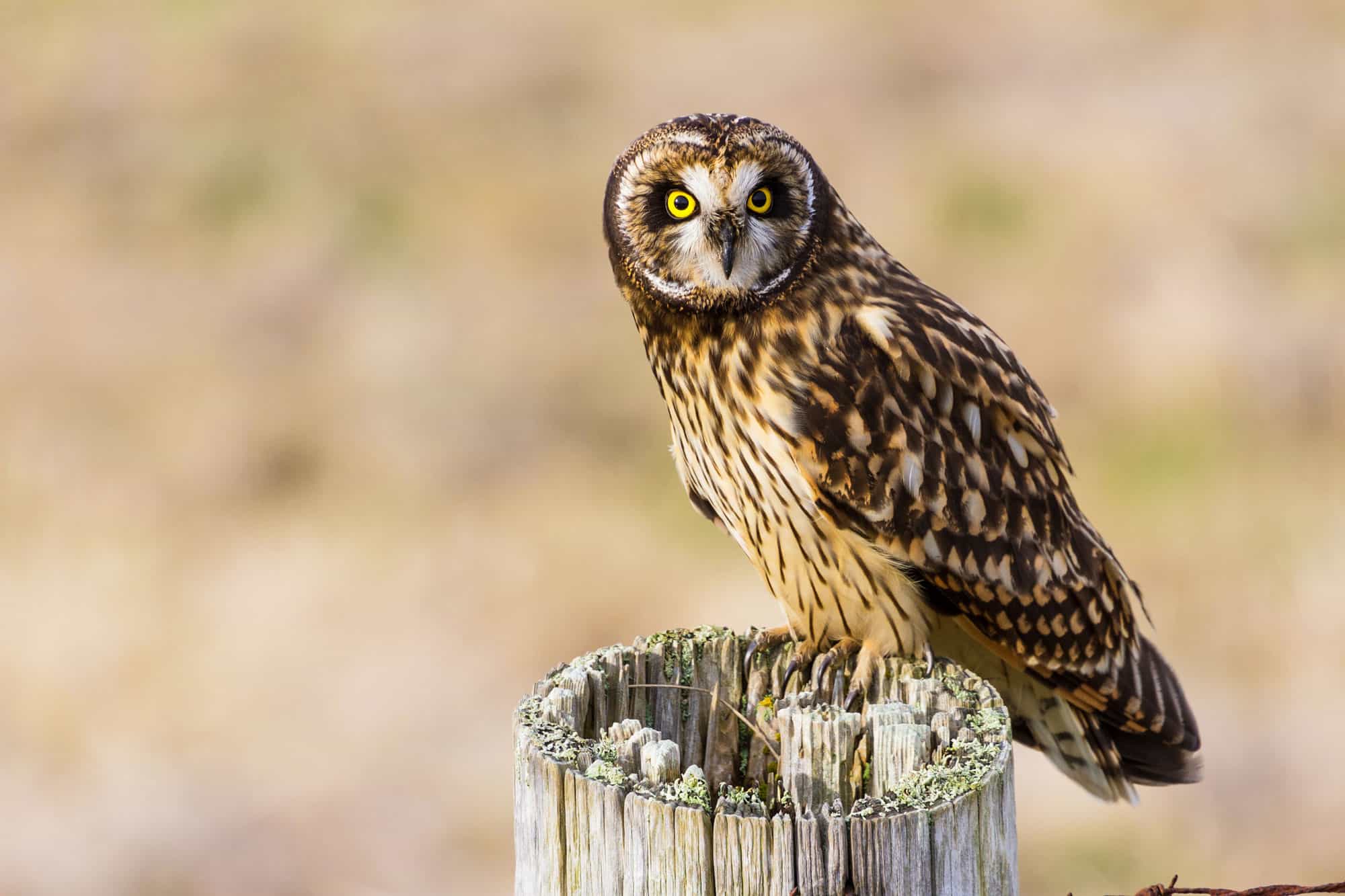
Short-eared owls are a state-endangered species in Illinois.
©iStock.com/Devonyu
The next owl in Illinois is the state-endangered short-eared owl. Like the long-eared owl, these owls have ear tufts, although they are much smaller and less noticeable. Short-eared owls are again light brown with dark brown markings. They typically inhabit Canada and more northerly US states, then migrate south for the winter. However, some short-eared owls are resident in the most northerly regions of the state all year round. They are most active around dawn and dusk and live in prairies and grasslands.
5. Northern Saw-Whet Owl

Northern saw-whet owls are the smallest owls in the state.
©iStock.com/bookguy
The smallest owl in Illinois is the northern saw-whet owl which is only six to nine inches long, with a wingspan of 16 to 20 inches. They have brown bodies with a mottled appearance, as well as white markings on their faces. Northern saw-whet owls inhabit the southern region of the state during the winter and may sometimes inhabit the northern half during the summer. However, they are not particularly common birds and can be difficult to spot. They are nocturnal, and their preferred habitats are forests and grasslands.
6. Barn Owl

Barn owls have a distinctive heart-shaped face.
©DEBORA DUARTE LISBOA/Shutterstock.com
Next is the barn owl which, although a permanent resident in Illinois, is not common or easy to spot. Barn owls are approximately 13 to 16 inches long, with a wingspan of three to four feet. They have a heart-shaped face and a buff-colored body as well as a lighter underside. Barn owls are nocturnal, although may be seen around dawn and dusk too. They prefer open habitats but will nest in barns and outbuildings as well as in trees.
7. Barred Owl
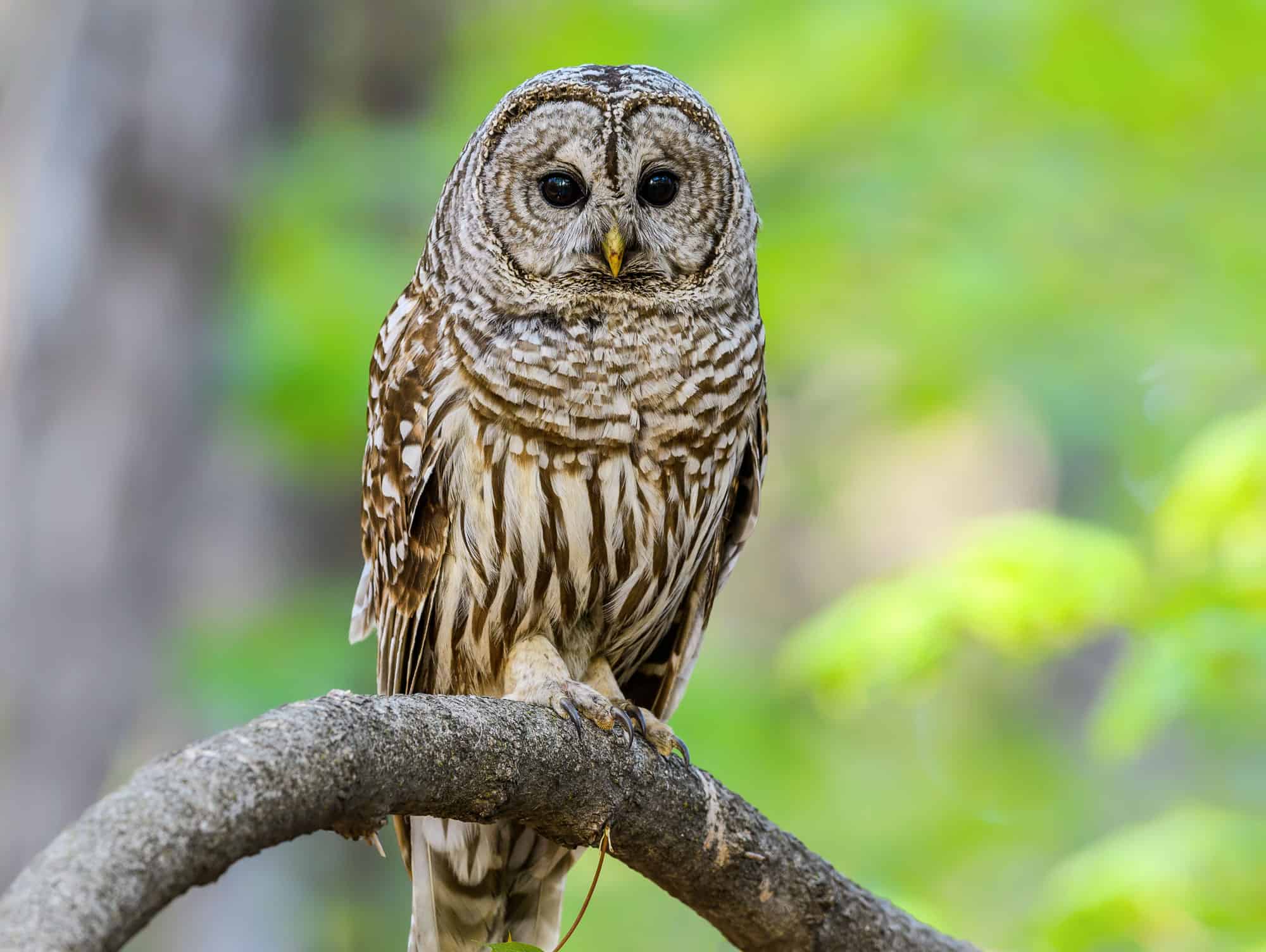
Barred owls live statewide and inhabit forests and woodlands.
©FotoRequest/Shutterstock.com
One of the most common owls in Illinois is the barred owl, which lives right across the state. Their preferred habitats are woodlands and forests, particularly areas close to water. They typically nest in tree cavities, and the breeding season occurs between February and April. Barred owls are approximately 16 to 25 inches long, with a wingspan of 50 to 60 inches. They have a “barred” appearance, with brown bars over a white body.
8. Great Horned Owl

Great horned owls are one of the most common owls in the state.
©kojihirano/iStock via Getty Images
Another common owl is the great horned owl which is a resident in the state all year round. Great horned owls live in a variety of habitats, including forests, woodlands, and parks. They are typically nocturnal but may also be observed at dawn and dusk. Great horned owls are approximately 17 to 25 inches long and have a wingspan of almost five feet. They are usually grayish brown with a reddish color on their face and a patch of white on their throat.
9. Eastern Screech Owl
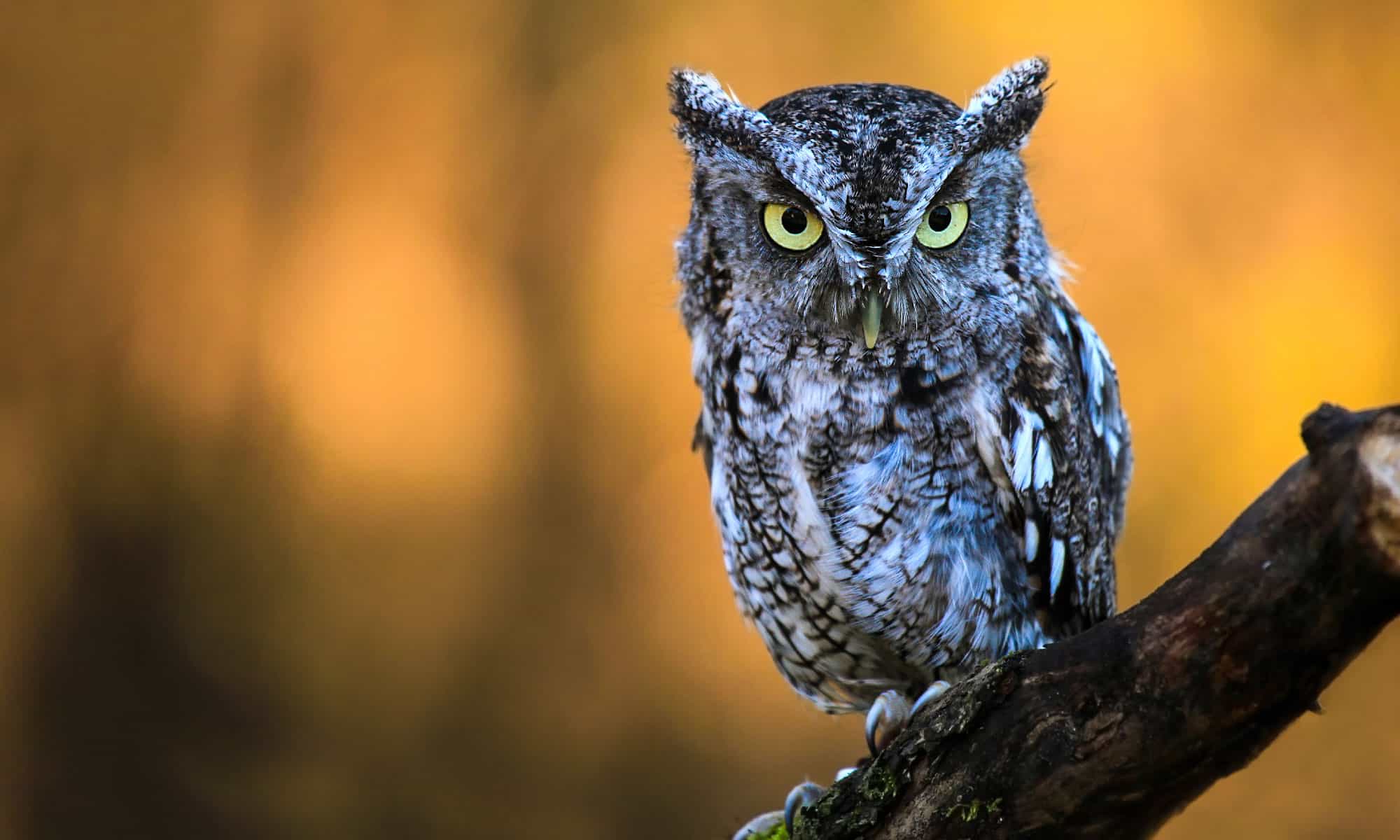
Eastern screech owls occur statewide and typically nest in tree cavities.
©mlorenz/Shutterstock.com
The final owl is the eastern screech owl, which is another small owl at only six to ten inches long. These owls are gray to reddish brown with small ear tufts. They live statewide and can be observed in a variety of habitats, including woodlands, grasslands, and urban areas. Eastern screech owls breed in April and May and usually nest in tree cavities. They are nocturnal and come out at night to hunt small mammals, birds, and insects.
The photo featured at the top of this post is © Imran Ashraf/Shutterstock.com
Thank you for reading! Have some feedback for us? Contact the AZ Animals editorial team.






